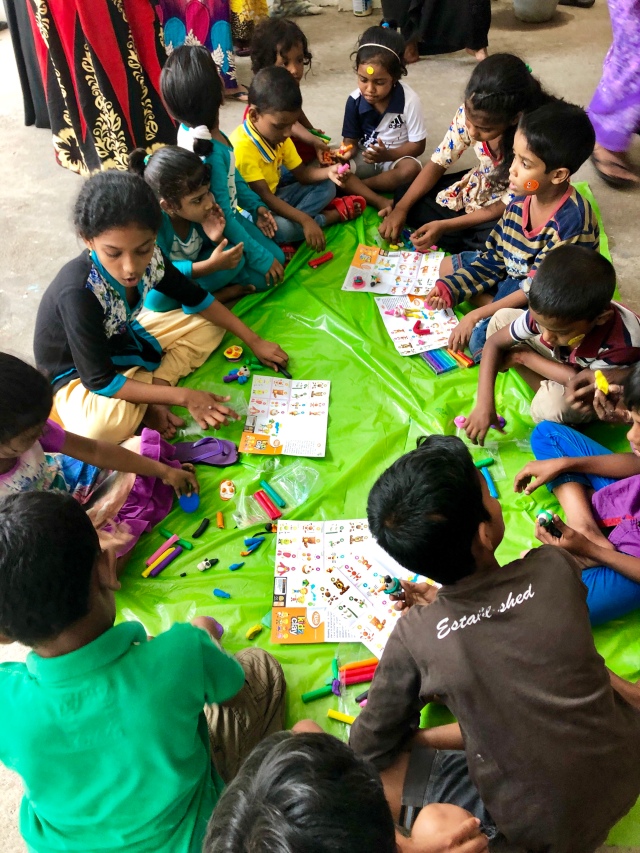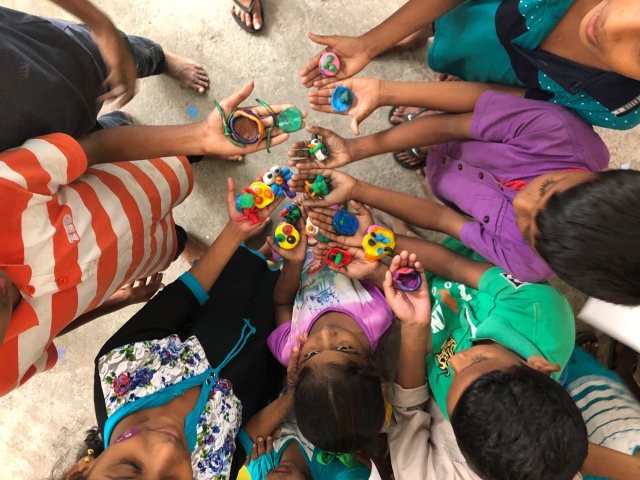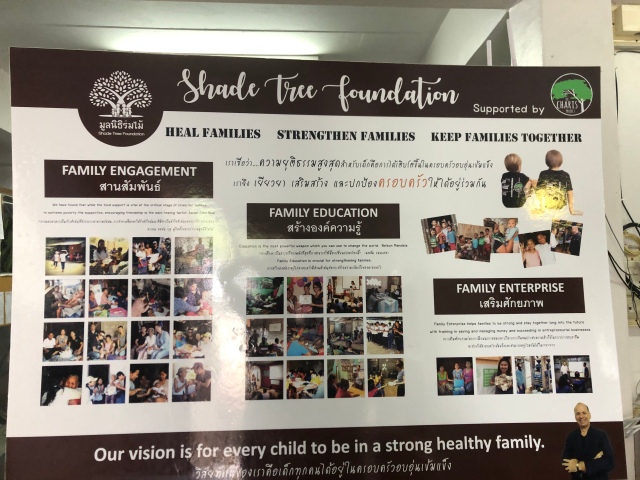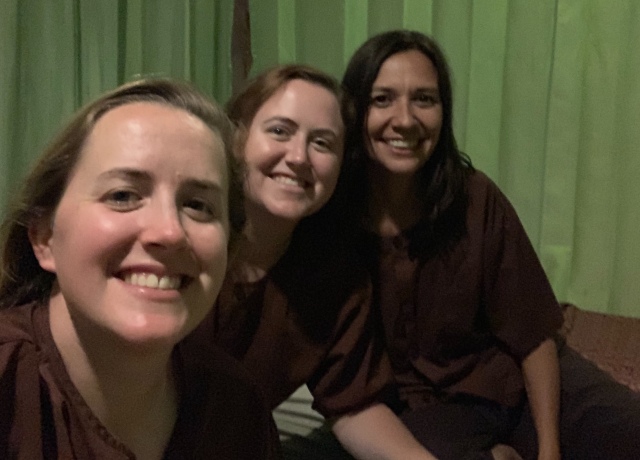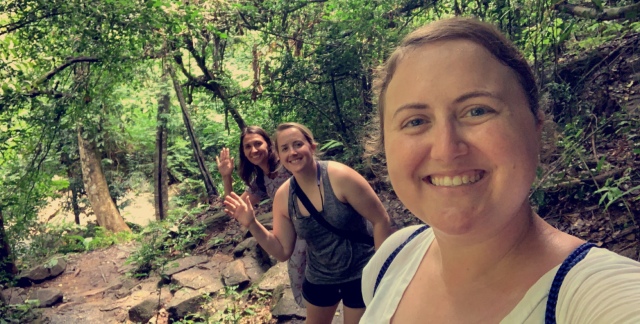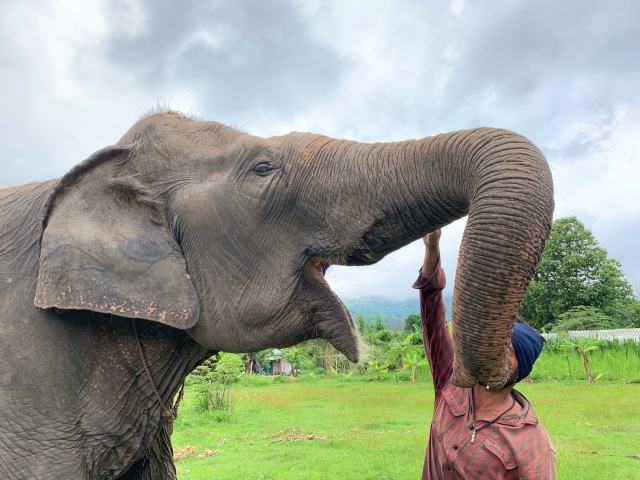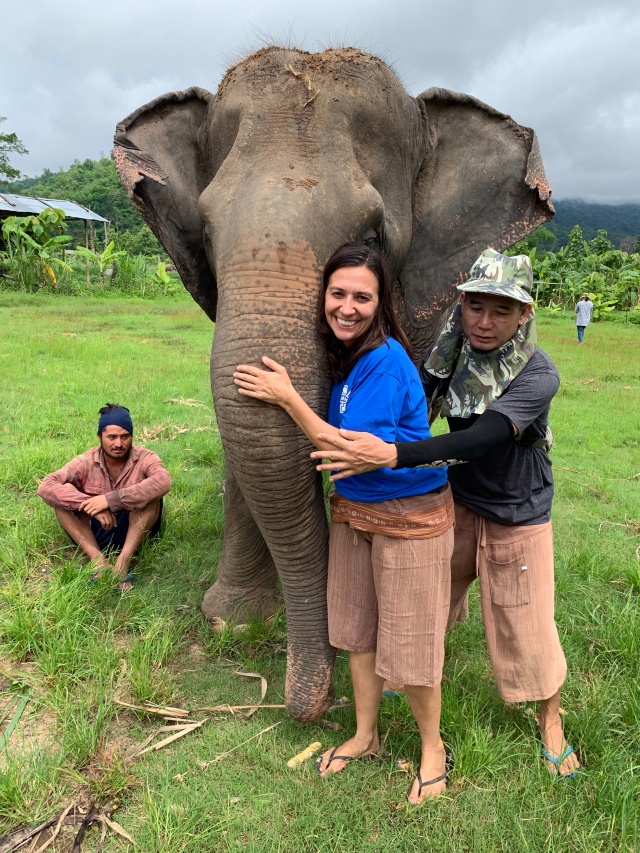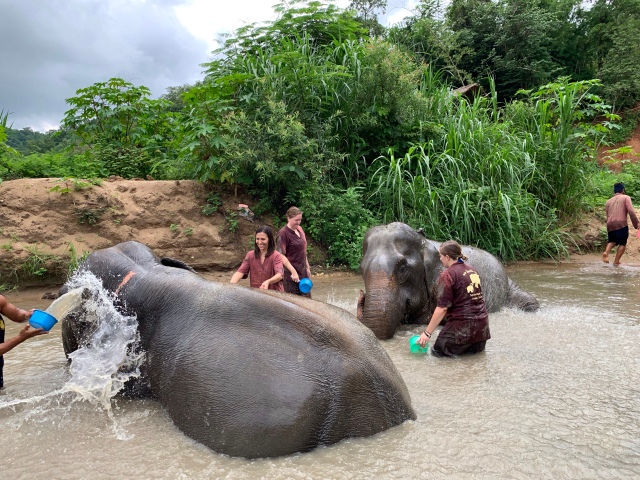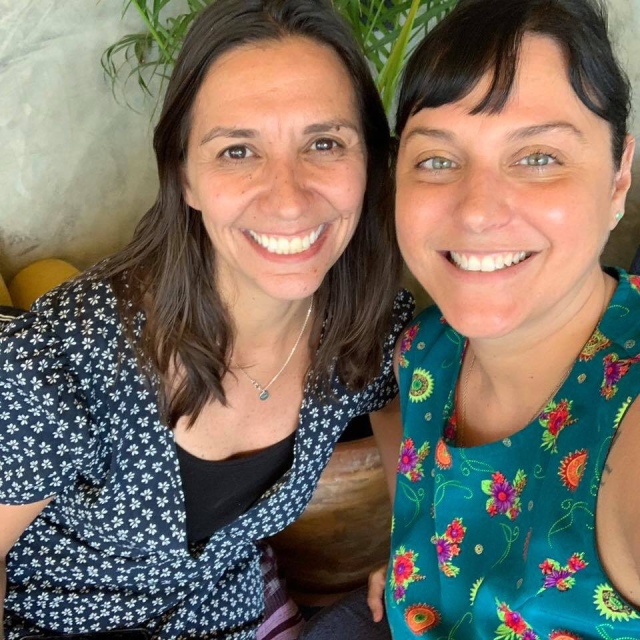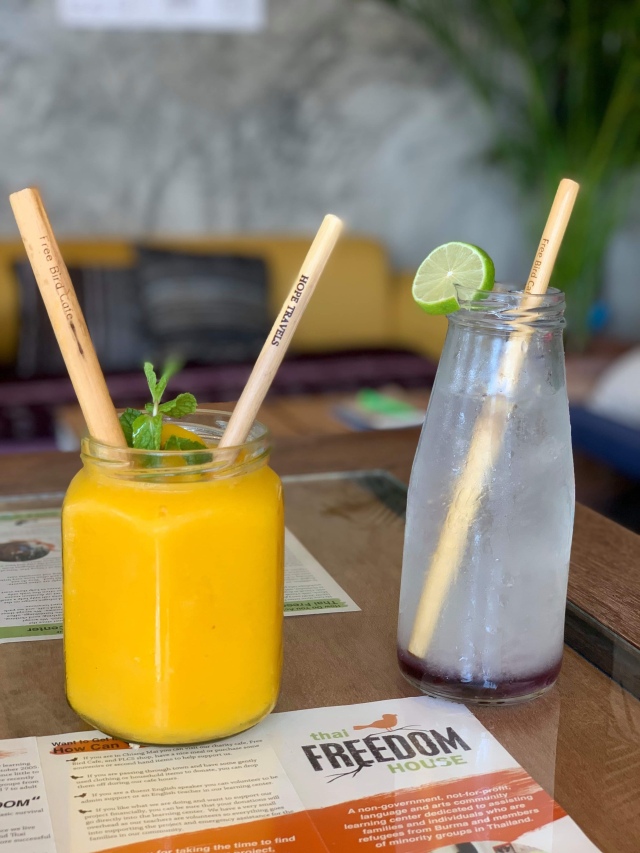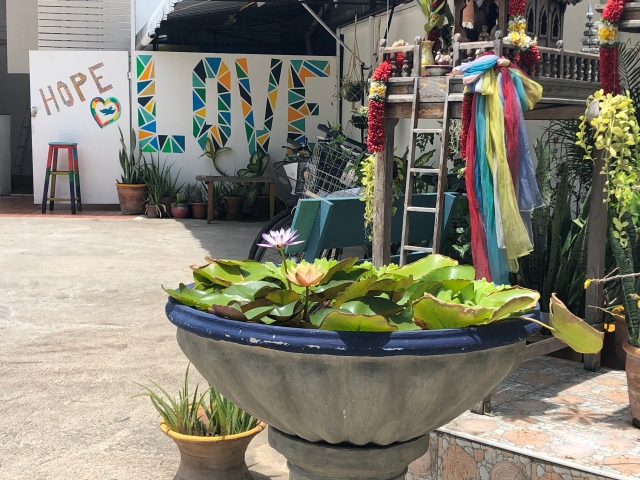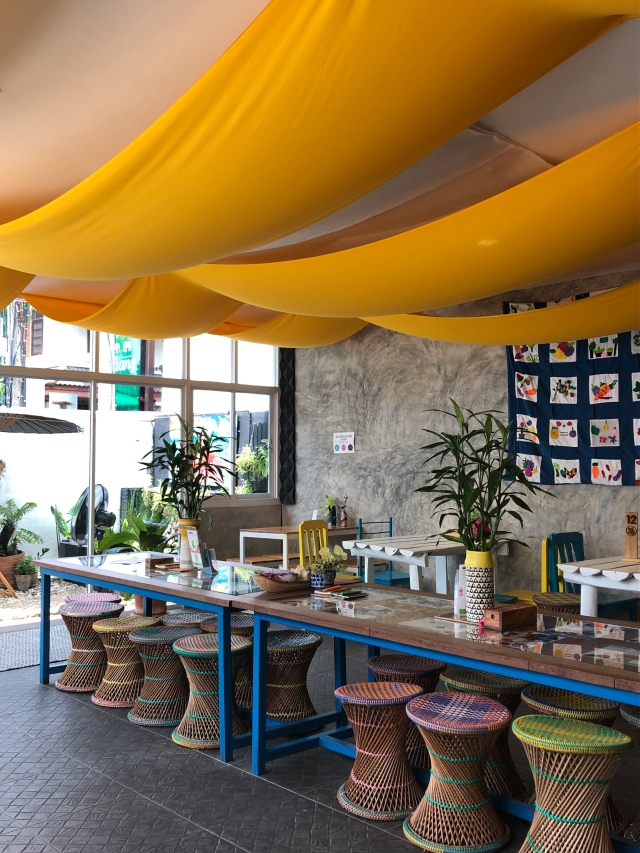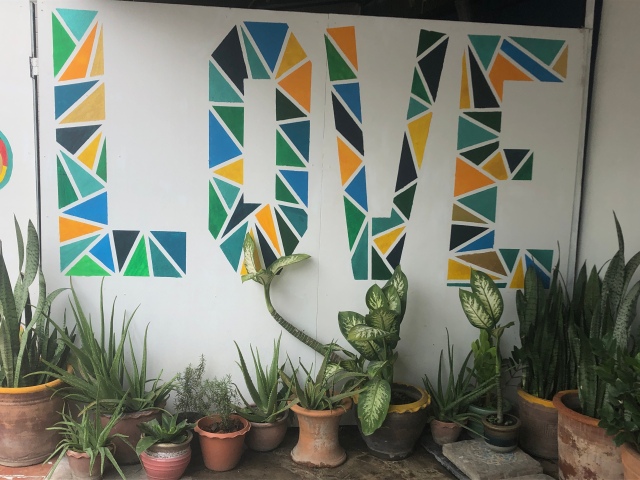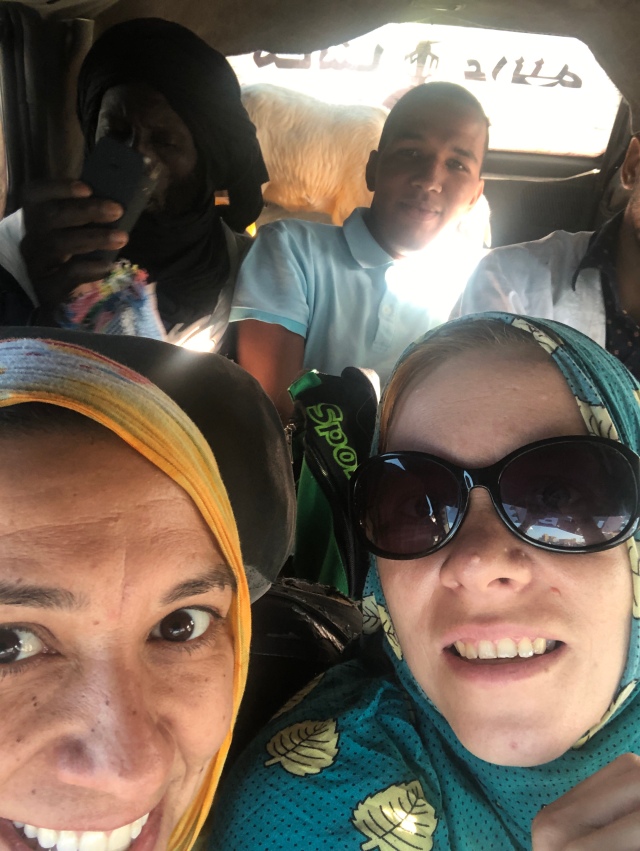Like all conflicts, you will hear differing stories of exactly what led to the August 25, 2017 militant attacks on Burmese border posts and the response of Myanmar’s Security Forces. I do not claim to be a historian, and my knowledge of the long-term issues sits on the surface of understanding. For those who are interested in knowing more than I am sharing, there are many online resources offering in-depth insights into Rohingya culture, challenges, and the current conflict leading to over 1,000,000 refugees living in camps near Cox’s Bazar, Bangladesh.

What I do know, and what is without debate, is there are two strongly opposing views of what rights should be given to Rohingya people and which country is officially their home. After being brought to this area as a British workforce in the 1800’s, this Muslim minority group has lived in primarily Buddhist Myanmar. They have settled in an area near the border with Bangladesh called the Rakhine State. As you know,, being brought to a country by outside forces is a recipe for resentment and discontent – especially after World War 2 when Rohingyas were loyal to Britain while Buddhists supported Japanese forces.
Although Rohingya have lived in this area, which is officially designated within the Myanmar borders, they were defeated in a quest for equal rights when Myanmar was granted independence in 1948.
 Since then, they have been denied citizenship and voting rights, not included in official census polls, denied freedom of movement, and blocked access to education. What they did have to survive these conditions was the land they tended for their livelihood and survival.
Since then, they have been denied citizenship and voting rights, not included in official census polls, denied freedom of movement, and blocked access to education. What they did have to survive these conditions was the land they tended for their livelihood and survival.

Feelings of oppression and inequality by Rohingya continued to grow. In Myanmar, a movement grew in the belief that Rohingya people do not respect the Buddhist moral precepts, are aggressive, and have the goal of making Myanmar a Muslim country. There is a spectrum of beliefs related to these viewpoints, with many varying accounts of the growing tensions.
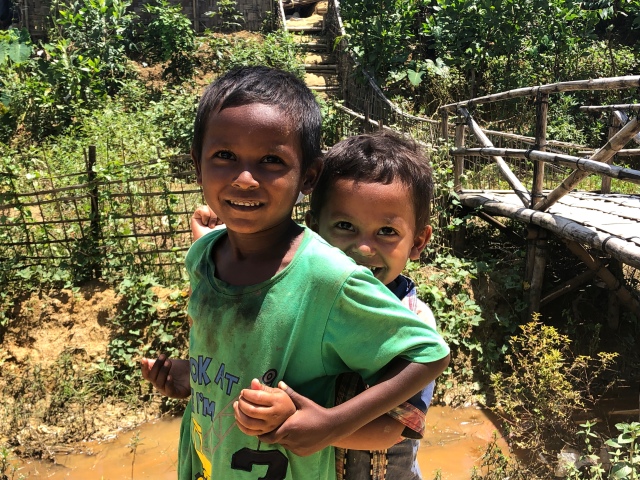
What can be confirmed about August 25, 2017 is the early morning attack by Rohingya militants using knives, clubs, and improvised explosive on Burmese border guards that killed 12. What is also confirmed is the swift and brutal military response that often did not differentiate between civilians and insurgents. Stories include burned villages, brutal killings of Rohingya civilians, and rape of Rohingya women. Thousands were killed, and people fled immediately to Bangladesh by walking for more than a week or crossing the Naf River using wooden fishing boats.
In the early days of this exodus, Rohingya were often welcomed by Bangladeshi citizens and government who provided immediate support for weakened and often dying people. When speaking of this crisis, you will often see startling images of Rohingya desperately climbing from boats where waiting Bangladeshis guided them ashore and in the direction of help.

In the last two years, repatriation to Myanmar has been denied – as many people say they do not want them back – as they did not consider them to be citizens in the first case. Instead, many believe they were illegal and from Bangladesh. Many citizens and government officials have claimed returning is a a viable option, but from what is discussed here, (speculation since the Rakhine State is no longer accessible to media or human rights organizations), is that is some conversation the Rakhine State is currently a valuable area being developed as a seaport by influences from China and India who have diligently supported the government of Myanmar in this conflict.
This is a short summary of a complex issue because I felt like providing some background history was important context for sharing about my visit to the Refugee Camps in Cox’s Bazar. These camps are currently home to over one million Rohingya people. My goal was impartiality, but after spending days in the camp, it is also hard to do so, because it is difficult to imagine circumstances that could displace so many and challenging to be impartial when you listen to stories shared. However, I recognize my thoughts lack other personal perspectives and experiences.

Health Management BD (HMBD) is a nonprofit organization working in the camps and the team who offered to host my time there. Dr. A K M Taifur Rahman coordinated an introduction to their work coordinating health and learning centers within the camp. His team has been working in the camp since the first days of this crisis and have done extensive work to support Rohingya people – in spite of challenges with infrastructure, funding, and acquisition of resources. They are committed to providing physical, educational, and emotional healing opportunities to people until there is a clear end to the need.

On our first day entering the camp, I was not prepared for what I would encounter. An ambulance filled with doctors and team members picked me up in the morning. I knew the camp was near Cox’s Bazar, and the distance on the map looks relatively close. I was not aware we would drive over narrow, bumpy, and underdeveloped roads filled with aide vehicles and workers heading in the same direction. Along the 90+ minute ride, we passed farmers tending land in the already blazing heat while plowing with animals and simple equipment.
 As we swerved around cows, motorcycles, Tom Toms, trucks, and people, our ambulance expertly carried us through the lush green land to the camp entrance.
As we swerved around cows, motorcycles, Tom Toms, trucks, and people, our ambulance expertly carried us through the lush green land to the camp entrance.

The dedicated team makes this trek back and forth each day, spending almost 4 hour of commute time to serve in the camps. Immediately, the landscape shockingly changes, seemingly out of nowhere, eyes set upon disheveled housing as far as the eye can see. Generally, it looks like a large town, haphazardly designed with available materials and in a rush that denied depth in planning – which is exactly what it initially was.

Bangladesh is a developing country, so while conditions in the camp were challenging, they were not significantly different from much of the housing leading to the camp. What is very different is the sheer mass of humanity piled in the space.
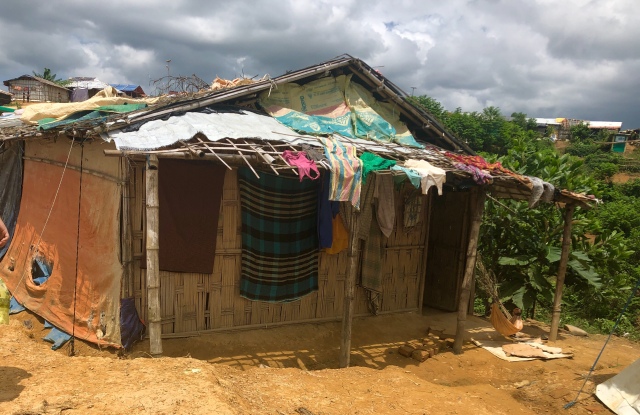
As we drove in, I had a lot of questions. SO many questions. First off, most of the refugees are not provided with access to employment. While many are trying to be resourceful, life in a camp is very different and there is little use for many skills gained tending land at home.
Support from Bangladeshi government, International NGOs, and representatives of many governmental aid organizations from around the world can be found everywhere. As we entered, gas tanks for cooking were being distributed to long lines of people. Large bags of rice were carried by children and adults into home areas. While many people were bustling, there were also many people who seemed to be living without purpose and clarity. Most of the people have suffered personal trauma and violent loss of loved ones – often before their eyes. Some children were somewhat skittish when encountering people as they have first-hand experience in being unable to trust others. Relationship building took place in all kinds of way to make them feel comfortable.

Camps are separated into smaller sections by number. The HMBD team oversees a learning center in Camp 13 and a health center in Camp 17. The learning center has two open-concept classrooms providing daily instruction for children in English and Rohingya language.
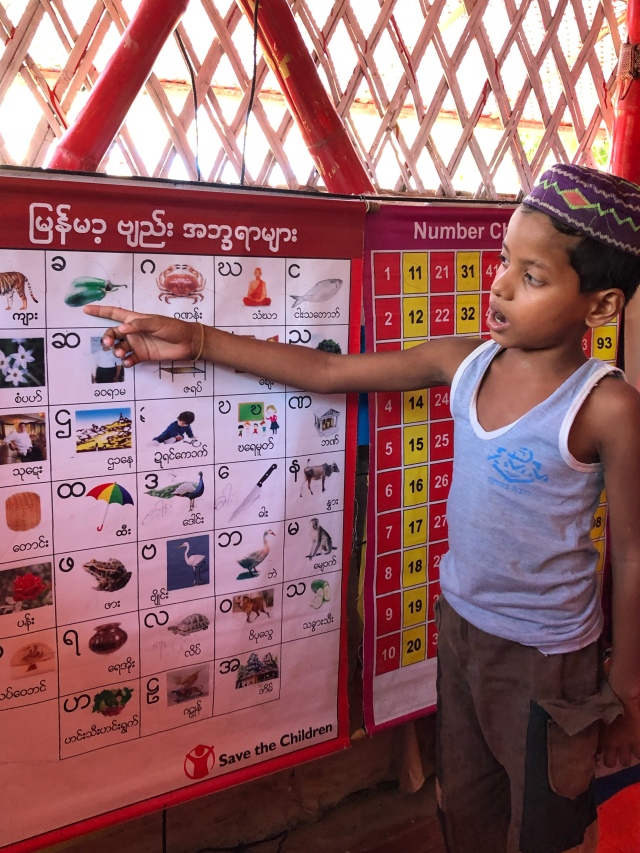
Based on a decision of the Bangladesh government, refugees are not allowed access to Bengali language as people have concerns about how that will impact their long-term employment and repatriation to Myanmar. When visiting, children were repeating days of the week in a sing-song fashion while being led by their peers. The classroom was full for each of the daily sessions with 50+ learning and receiving high energy snack biscuits.
Outside of the classroom areas, there is an open space where children can spend time with assurance they will be safe. Feeling much like a playground, children played marbles, hopscotch games, and soccer. While the children shared characteristics of children around the world, there was also an evident impact of their lives as they often needed redirection about aggression and reminders against hitting, shoving, and pulling hair.

Consistent and necessary medical care is provided by HMBD doctors. They visit the medical center where doctors are staffed six days a week. Many people, because of the living conditions, receive medication and treatment for common camp ailments including respiratory infections, skin conditions, and gastro-intestinal issues.

At the health center, I was also able to visit a women’s training centered on Gender-Based Violence. The training was provided by a teacher and a team of Rohingya volunteers. This group meets regularly to impact as many families as possible in creating a common understanding of safety and support for each other.

It would take a book of many pages to write everything I saw or pondered during this short time in the camp, so I am only going to share key observations and lingering questions.
* While Bangladeshi people willingly opened their arms to refugees, their desire is generally not for citizenship to be a long term solution and they initially believed their support would be a short term response. It is becoming increasingly clear and potentially agitating that this is not the case. In some ways, however, a camp of this size offers opportunities for Bengals as they have become hosts to many international aid workers. Hotels are full in Cox’s Bazar. Prices have increased. New construction is everywhere. All of this leads to people working. However, it also makes many of the local resources inaccessible to local citizens who have watched prices for general needs skyrocket in areas where international workers reside.

*The big questions for me relate to sustainability. As international organizations begin to leave the area, how much of what has been created is realistic for local citizens to maintain and how much government support can or should be used to address camp needs when you have many additional infrastructure and social needs within Bangladesh. It is easy to take the initial aid, but once systems of support are created, and people are dependent upon them, what happens when they are no longer available. In Iraq, we saw schools built by UNHCR that were now in disrepair and left for local governments to maintain – which is not practical or realistic in most cases.
* Bangladesh is not an affluent country – resources are limited for local people. I have to imagine there are growing resentments as refugees are often provided with resources locals are lacking themselves. These types of situations only escalate as time goes on. We often watched truckloads of rice passing laboring farmers who were toiling for the same. Roads were being built out of necessity toward the camp while roads in other villages remain in disrepair. Can goodwill last in these conditions? If so, for how long?
* Camp capacity is a concern as many Rohingya people do not participate in family planning. Lack of knowledge, or also a desire to build a long term identity, may contribute to this, but the reality as described to me is that most families have 8-10 children. While there are NGOs focused on educating families normalizing use of contraceptives, the time it takes to implement this information doesn’t change spaces where physical property is already tight – with tens of thousands of children are being born each year.

* There are environmental concerns about the massive deforestation that took place to create these camps. Pollution is an issue with so many gas containers being used for cooking within this small space. Trash, latrines, construction… there are so many factors impacting this area. Wild elephants were displaced and now must be watched from towers surrounding the camp to avoid re-entry and attacks. There are obvious short term and long term impacts to this type of rapid change and growth.

* Visiting refugee camps leaves me with questions about long term plans. As people leave or are forced from homelands and settle in new locations, with an influx of aid, the conditions can be atrocious. However, they can also become more comfortable than the homes left for people to return to. A common question asked was, “Why would people want to go back to burned-out villages when they have access to everything they need here?” On the flip side, as I mentioned, the questions of, “How long will international organizations stay here?” and “How long can the Bangladesh government sustain their role in helping?” are common too. What will happen when the two timelines do not match?
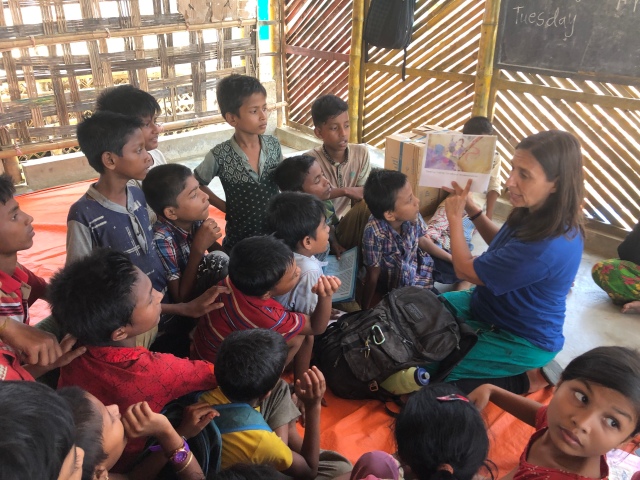
* The impact of limited education and trauma are definitely serious concerns for everyone. As witnessed in Rwanda, this is a long term challenge that must be addressed head on. As people without a country, how will this happen beyond what is currently offered in camps? When not addressed, and when offered with limited resources, extremist groups have the potential to prosper and recruit. What are the consequences of this for Rohingyas, Bengals, and international citizens?
* For me, I am always going to support the work of organizations who are closest to locals within conflict settings. What I have observed from international aid organizations often leaves me with questions. Often, officials visit camps from fancy cars after nights in 4 star hotels. Cultural knowledge can be lacking and at times, I have seen educational materials that seem incredibly inappropriate in the settings where they are sent. Their work is good and important I know, but we all have choices in how we use the money and resources we have, and mine will always be used to back people who are locally committed to providing support and resolutions where needed.

I am still a bit overwhelmed by my days there. My days were spent really learning as much as I could about the work of HMBD while playing with kids, reading some children’s stories, and getting to know the staff. Many Rohingya people want their stories to be told. They want the international community to understand what they are facing and to help them to find a place they can safely be at home.

I am grateful to Dr. Taifur for his support in allowing me to see the work they are doing in this difficult situation. Your leadership is valuable to all of the people you meet. The HMBD team is filled with talented people who are striving to improve conditions and provide care for many.
If you would like to learn more about the work of HMBD, Dr. Taifur can be reached at dr.taifur13@gmail.com.

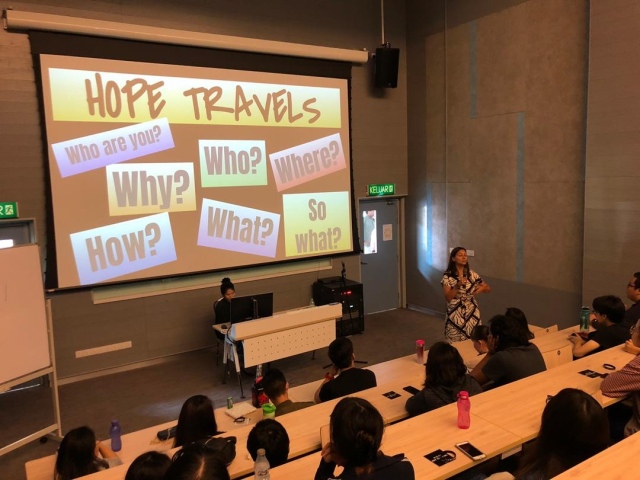








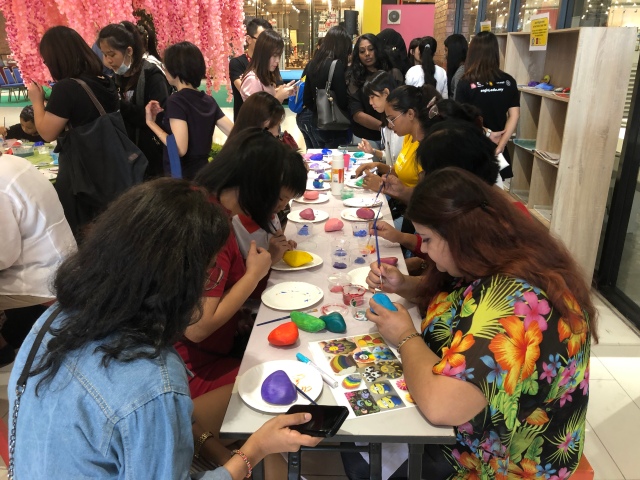

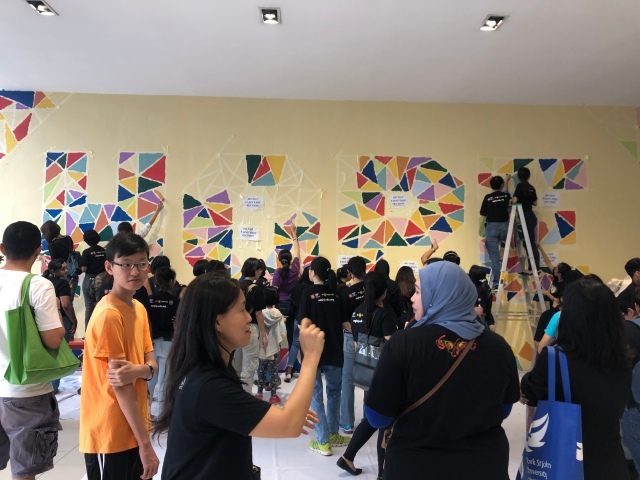
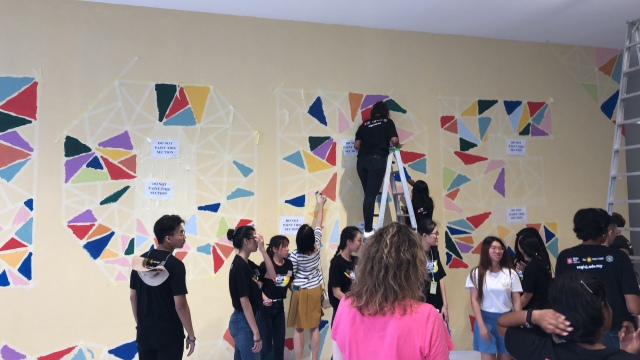





 Since then, they have been denied citizenship and voting rights, not included in official census polls, denied freedom of movement, and blocked access to education. What they did have to survive these conditions was the land they tended for their livelihood and survival.
Since then, they have been denied citizenship and voting rights, not included in official census polls, denied freedom of movement, and blocked access to education. What they did have to survive these conditions was the land they tended for their livelihood and survival.




 As we swerved around cows, motorcycles, Tom Toms, trucks, and people, our ambulance expertly carried us through the lush green land to the camp entrance.
As we swerved around cows, motorcycles, Tom Toms, trucks, and people, our ambulance expertly carried us through the lush green land to the camp entrance.


















